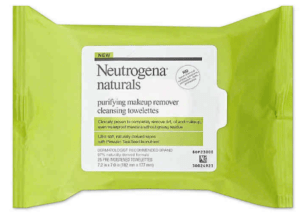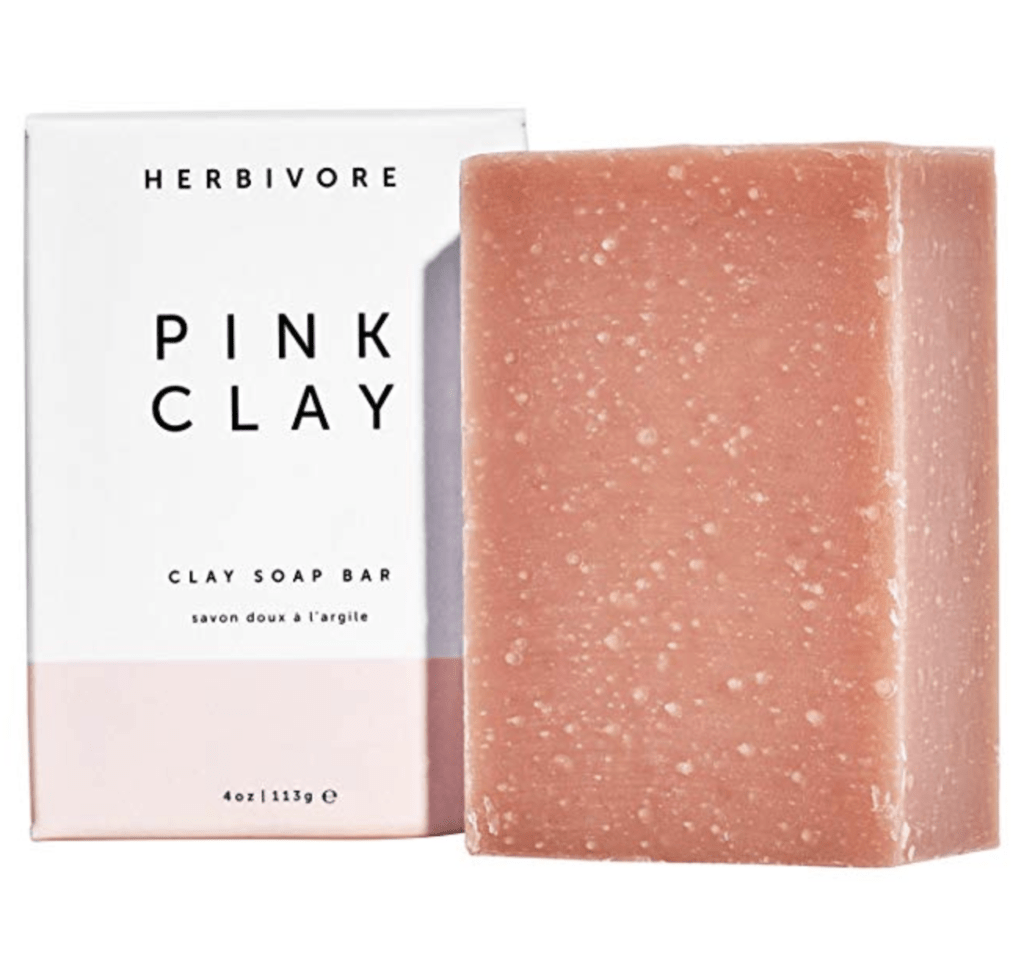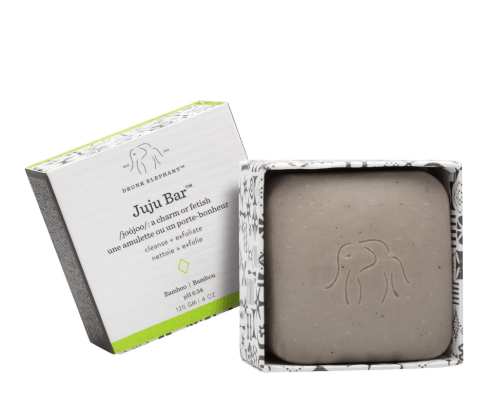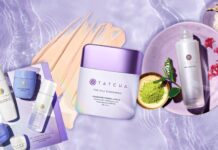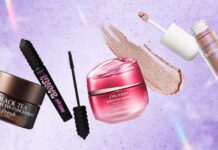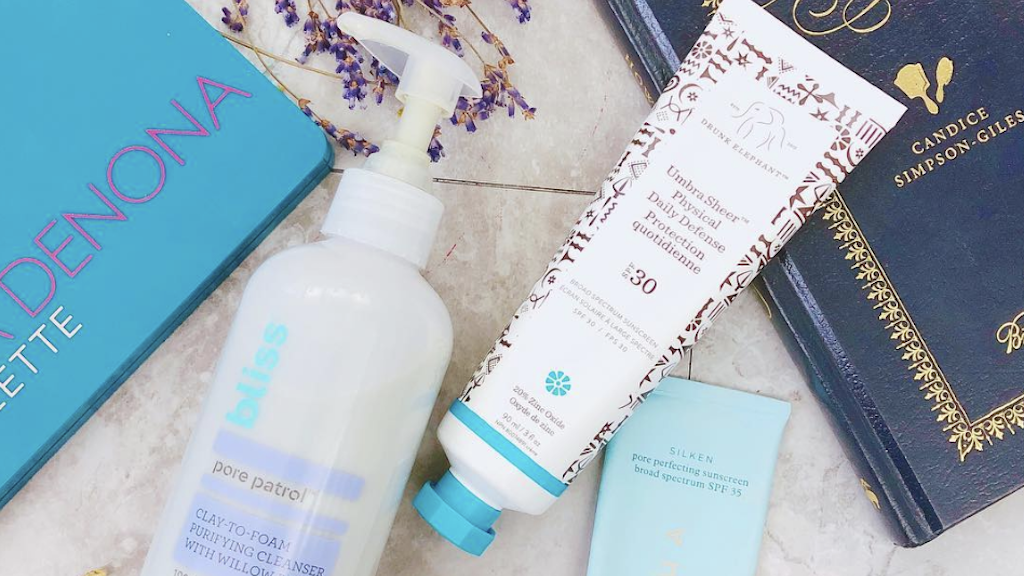
Taking off your makeup and washing your face seems straightforward and simple, right? Usually you would use some sort of cleanser to remove the day’s grime, splash some water on your face, and rinse it all off, but it’s actually more complicated than that.
Cleansing is the first and most important step because if you’re not properly cleansed, nothing will sink or your favorite moisturizers won’t even work, which serves as a lovely breeding ground for bacteria and eventually nasty breakouts. Let’s be real, we all want our skin to look bright and smooth and by properly cleansing our faces, we can improve our skin health, reduce skin inflammation, and prevent breakouts.
So today, we’re going to talk about the 6 most popular products to take off makeup and cleanse the face, the pros and cons of the products, and the recommended method for using each product so that you are greeted with a clean face every time!
1. Facial Wipes
This one’s the most straightforward, facial wipes are disposable cloth soaked in soap; a moist towelette; a soap towel; a lazy girl’s best friend — but it shouldn’t be! Think of facial wipes as something that smears dirt, bacteria, oil, and makeup across the face. It’s like applying cleanser to your face but not washing it off. The cleansing agents in the wipes are designed to break down debris within the pores, but it’s the rinsing action that actually removes it.
HOW TO USE: Gently wipe your face, jaw, and hairline (be extra gentle around the eyes and lips!) Don’t be afraid to use more than one wipe, especially if you have a full face of makeup. Follow up with a cleanser and rinse.
PROS: Facial wipes are super easy to use, convenient, inexpensive, and perfect for on the go.
CONS: Wipes contain preservatives to prevent bacteria from growing on the moist towelettes and alcohol which can dry out and irritate your skin. Excessive rubbing can cause low-grade inflammation, skin-pigmentation, and wrinkling.
Facial Wipes We Love
Not to be confused with the oil-cleansing method where you’re rubbing oil onto your face and wiping it off, cleansing oils bind to other oil-based residue such as sebum, SPF, foundation, and pollutants on your skin and in your pores. When it comes in contact with water, the cleansing oil will emulsify and turn into a milky texture which can be washed off. A common misconception with using cleansing oils is that people with oily skin shouldn’t add more oil on their face. But in actuality, people with oily skin as well as other skin types can use the cleansing oil to effectively break down makeup.
2. Cleansing Oil
HOW TO USE: Apply a pump of oil into dry skin with hands and massage for a minute. Wet your fingertips and continuing massaging. This will help the water emulsify the oil and attach themselves to the “bad” oils on your skin. Rinse off with water or a warm washcloth.
PROS: Oil cleansers effectively dissolve dirt and makeup without leaving the skin feeling tight. They also contain antioxidants, essential fatty acids, and anti-aging ingredients that help hydrate, and improve the texture and appearance of your skin.
CONS: Oil cleansers may not entirely cleanse away all the makeup, which can lead to breakouts and skin irritations. For some people, oil cleansers can clog up pores, or develop milia, which are small and hard white bumps.
Oil Cleansers We Love
3. Liquid Cleanser
I’m sure you’ve gone into a makeup store or drugstore and mentally scratched your head in confusion as you looked at the vast display of liquid cleansers in different shapes and sizes. Most importantly of all, what’s the difference between gel, cream, and foam cleansers? Are they even food?!
Let’s not even go there. But we will explain what’s different about these three variations of liquid cleansers.
Gel cleansers are typically clear and generally designed for deep cleansing. They are effective at decongesting clogged pores, removing excess oil, and can kill acne-causing bacteria thanks to their antiseptic and exfoliating properties. They are ideal cleansers for people with oily skin.
Cream cleansers (also known as milk or lotion) is thick, creamy, and moisturizing thanks to ingredients like botanical oils. It’s made from lightweight emollients, which can gently cleanse without stripping your skin of its natural oils. They are ideal cleansers for people with dry and sensitive skin.
Foam cleansers are lightweight cleansers that help remove excess oil on the skin. They start out as cream or gel and then burst into a rich and foamy lather. Foam cleansers can be a little harsh on the skin because they’re made to slightly dry out the skin, so it’s ideal for people with oily, acne-prone, teenage, or combination skin.
HOW TO USE: Wet face with tepid to lukewarm water then dispense a small pea sized amount of cleanser onto your hand. Rub the cleanser in between your palms until foamy and massage onto your face. Rinse and pat dry.
PROS: Liquid cleansers help keep the skin’s natural pH and moisture balanced and many are formulated with helpful skin-soothing and brightening acids and botanicals.
CONS: Some liquid cleansers contain harsh chemicals which can strip your skin of moisture and cause dehydrated or dry and sensitive skin.
Liquid Cleansers We Love
4. Double Cleansing
With its origins in K-beauty, this method of cleansing has dominated the rest of the world for its reputation to clear skin. It isn’t a must-do for most people but it can be worth it if you, for example, have excessive oily skin or wear heavy or transfer-resistant makeup and a mineral-based sunscreen with active ingredients such as titanium dioxide or zinc oxide. In this case, double-cleansing is effective in removing both the makeup and sunscreen.
HOW TO USE: Double cleansing involves two-steps: wash your face with an oil-based cleanser, followed by a water-based cleanser.
The reasoning behind this because the first step (washing using an oil-based cleanser) draws out oil-based impurities such as sebum, SPF, and pollutants. The second step (washing using a water-based cleanser) further cleans the skin free of sweat and dirt.
PROS: Double cleansing helps clean your skin thoroughly without drying it out. It’s great for all skin types and serves as a great primer for your skin care routine because a clean face allows better absorption!
CONS: Double cleansing can be expensive and time-consuming for some. It also requires some research to figure out what combination of oil based and water based cleansers work best for you.
5. Bar Soap
There is much debate when it comes to bar soaps — either you are for or against bar soaps. For those who are Team No Bar, there are claims that bar soaps are unhygienic, drying, and all-around inferior to traditional liquid soaps. This may be true to an extent, but not all bars are created equal. Studies have shown that although you may find some bacteria on the bar’s surface, it is highly unlikely to cause disease and doesn’t stick around after you wash your skin. And with improving technology comes a new generation of bar soaps that contain plenty of moisturizing ingredients that will keep your face soft and fresh.
HOW TO USE: Using lukewarm water, wet your hands, your face, then the bar. Work up a lather with your hands and gently massage your face in circular motions using the tip of your fingers. Rinse and pat dry. When not in use, store the bar in a cool place and preferably on a dish for draining out the water.
PROS: Bar soaps are more eco-friendly than other cleansers due to the packaging, easy to travel with, and is gentler for your skin. It is also ideal for people with oily and combination skin.
CONS: Some bar soaps are drying and harsh, and can strip away natural oils, which can then lead to your skin to overproduce oil to make up for the dryness. This overproduction of oil can eventually make way for clogged pores and acne breakouts. Additionally, keep an eye out for the following chemicals: Sodium Lauryl Sulfate, Dioxane, Parabens, Propylene glycol, Diethanolamine, Fragrance/Alcohol, Triclosan.
Bar Soaps We Love
6. Cleansing Balm
Cleansing balms use oil to latch onto and remove makeup without stripping the skin. They are similar to cleansing oils but has a thicker formula that’s almost solid in consistency, and contains a lot of minerals, plant oils, and antioxidants which are gentle on the skin. The cleansing balm is ideal for dry and sensitive skin.
HOW TO USE: Warm up the balm in your hands and apply to dry skin. Using a little water, massage the balm onto your skin, then rinse with warm water.
PROS: The cleansing balm is perfect for the wintertime or for taking off heavy makeup because it can simultaneously clean your face, moisturize dry patches, remove makeup, and lather your face with good oils.
CONS: Due to the consistency of cleansing balms, it takes commitment to remove from your skin. If you’re acne prone, be sure to remove any leftover residue completely (you may need to use another cleanser). Most cleansing balms also contain polyethylene, a microscopic plastic that contains potentially toxic manufacturing contaminants.
Cleansing balms we love:
7. Micellar Water
Micellar Water is made with two essential ingredients: water and one or more surfactants. But first, what are ‘surfactants’? They are molecules that are attracted to oil and grease and don’t mind being suspended in water. These surfactants are what helps the micellar water cling onto the makeup and dirt on your skin and draw out impurities, leaving behind a glowy and hydrated finish. Micellar water is ideal for all skin types, especially for dry and sensitive skin.
HOW TO USE: Soak a cotton pad with the Micellar Water and gently press into the skin to remove makeup and impurities.
PROS: Micellar water is cheap, gentle, and suitable for all skin types, especially super dry, sensitive, and acne-prone skin. It helps remove your makeup, cleanse, and moisturize your skin at the same time. When wearing your makeup, you can also use micellar water for a quick-fix using a Q-tip or retouching your face makeup by swiping it over your face and reapplying foundation.
CONS: You need to use cotton pads to use this cleanser effectively. Although it is super gentle and effective, micellar water cannot fully remove all impurities and full-coverage makeup by itself. Additionally cleansing is required to fully remove all traces of makeup on your skin.
Micellar water we love:
We made a video explaining Facial Cleansers & Makeup Removers:
Head over to more information and product recommendations:



